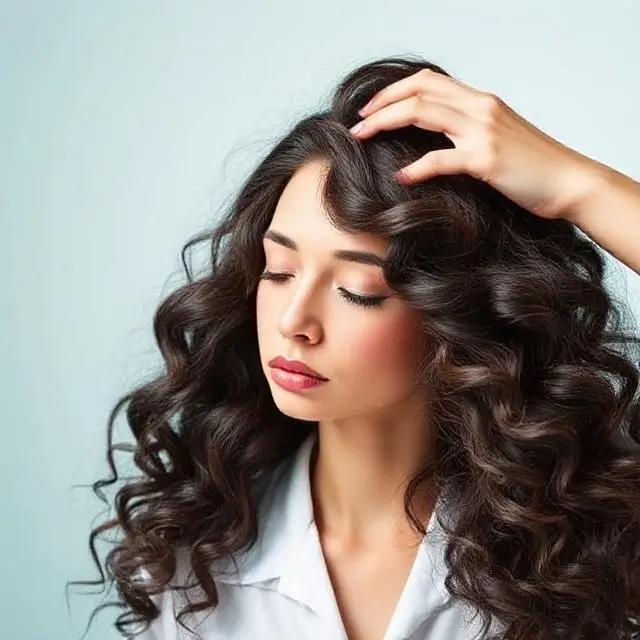The quest for lovely hair is as old as civilization. From ancient Egyptian oils to contemporary serums, humans have sought ways to keep their locks lustrous. But under the marketing speak (and beauty trends around the special shampoo of the season) lies real science — hair care is what it is basically because of the biology of hair and practices based on the best of our understanding of evidence. The Scientific Secrets of Hair Care: How to Keep Hair Healthy and Beautiful
Understanding Hair Structure
Hair is more complicated than you might think. Each hair strand has three layers: the cuticle (outer protective layer made up of weaker, overlapping scales), the cortex (middle layer that contains the protein keratin and provides color and strength), and for thicker hair, the medulla (center).
The overall health of your hair is related to the condition of the cuticle. When the cuticle lies flat, hair looks shiny and feels smooth. Environmental damage, mechanical refer to (heat styling, for example) and chemical treatments can lift these scales to leave hair dull, coarse and susceptible to tangles.
Hair sprouts from follicles embedded in the scalp, where living cells multiply and push up toward the surface, hardening in the process and filling with keratin in a process known as keratinization. That means the visible portion of hair is dead tissue — which is why taking care of hair health requires both proper care of existing strands and nutrients for the scalp, where new hair grows.
The Science of Cleansing
Cleaning is only part of the story with shampooing. Today’s shampoos use surfactants — molecules with a water-attracting end and an oil-attracting end — to lift away sebum, environmental pollution and product buildup. But frequent shampooing can leach hair of sebum, the oil that naturally coats and shields the cuticle.
For most people, daily shampooing is unnecessary and possibly counterproductive, research suggests. When you strip away too much sebum, your scalp overcompensates by producing even more oil, resulting in a cycle of greasiness that can feel impossible to escape. And most dermatologists recommend shampooing every 2-3 days, really concentrating the product on the scalp and not so much the lengths.
Water temperature is important too; if the water is too hot, it can remove natural oils and aggravate the scalp. Cleanse with lukewarm water to help the hair maintain its natural moisture balance.
Conditioning: Protecting the Cuticle
Conditioners do so by finely coating positively charged (cationic) ingredients, which sit atop the negatively charged damaged regions of the hair shaft. This action temporarily seals the cuticle, which helps the strands feel smooth and easier to detangle.
Deep conditioners and hair masks lend guiltily intensive treatment by containing higher levels of such ingredients, as well as oils and butters that can temporarily fill holes in damaged cuticles. These products are most effective when left on for the prescribed period — usually somewhere between 5 and 30 minutes — as the ingredients require time to adsorb to the hair surface.
Nutrition and Hair Health
(We grow about half an inch of hair each month, and nutrition heavily impacts the quality of that new growth.) Hair cells grow very quickly so that we need MMĂ for protein, vitamins, and minerals.
Key nutrients for hair health include:
- Protein: Since hair is 80-90% protein, a low intake can cause weak and brittle hair. Good sources are lean meats, eggs, legumes and dairy.
- Biotin: Biotin supplements are frequently used, though deficiency is uncommon. These can be found in eggs, nuts, and whole grains.
- Iron: Several studies have shown that iron deficiency is related to increased hair loss, especially in women. Red meat, spinach and lentils are high in iron.
- Omega-3 fatty acids: These promote scalp health and may help add shine and prevent dryness. You can find them in fatty fish, flaxseeds and walnuts.
- Vitamins A, C and E: Antioxidants that help protect hair follicles from oxidative stress. That fresh fruit and veggies, nuts and seeds.
Protecting Hair from Damage
Prevention is easier than repair when it comes to hair damage. The primary causes of damage include:
Heat Styling
Too much heat can also melt the hydrogen bonds within the hair proteins, and weaken the structure. Scientific studies prove that bubble formation within the hair shaft occurs at temperatures above 347°F (175°C), resulting in permanent damage to its structure.
Always apply heat protectants that contain silicones or other film-forming ingredients, creating a barrier between the hair and the heat source. These products do not fully prevent damage at all but they may minimize it to a considerable extent.
UV Radiation
And just like skin, hair can get sun damage. UVA and UVB rays cause proteins to break down in the hair shaft, which may fade color. Hats and products with UV filters offer protection against hours of exposure.
Chemical Treatments
Dyes, perms and straighteners work by breaking and reforming the bonds that make up the hair structure. Though modern formulations are gentler than their predecessors, these processes inevitably do some damage.
Spacing treatments properly and using products meant for chemically treated hair can help prevent this damage. Bond-building treatments containing ingredients such as bis-aminopropyl diglycol dimaleate can help mend broken disulfide bonds, but the results are not permanent.
The Role of Scalp Health
The foundation for good hair is a healthy scalp. Scalp has around 100,000 hair follicles and many sebaceous glands that secrete sebum to naturally condition hair.
Conditions such as dandruff (due to the yeast Malassezia), seborrheic dermatitis and psoriasis can create an imbalance in the scalp ecosystem and impact hair growth. Performing regular scalp exfoliation removes dead skin cells and product buildup that may clog follicles.
Scalp massage boosts blood flow to hair follicles, which may improve nutrient absorption. The journal Eplasty published a study in 2016 showing that 4 minutes of daily scalp massage for 24 weeks caused hair thickness to increase.
Nighttime Hair Care
Sleep friction between hair and cotton pillowcases will do serious damage to cuticles and cause hair breakage. Silk or satin pillowcases will minimize this friction. Or a loose braid (or silk bonnet) will work wonders to lessen knots and breakage.
Sleep with wet hair adds strain to the hair shaft, which increases the risk for breakage. Ideally, keep the hair at least 70% dry before hitting the bed.
Conclusion
Gorgeous hair is more than what’s on trend— it’s about knowing in and out your hair structure and what it needs to look and feel good. Science + consistent hair care = healthier hair of all ages. Keep in mind that results take time; noticeable improvements to hair health can take months as new, healthier hair grows in to replace damaged strands. The best hair care routine is the one that you will be able to stick to consistently over the long term, while also adjusting to your hair’s changing needs throughout your life, seasons and even lifestyle situations.


